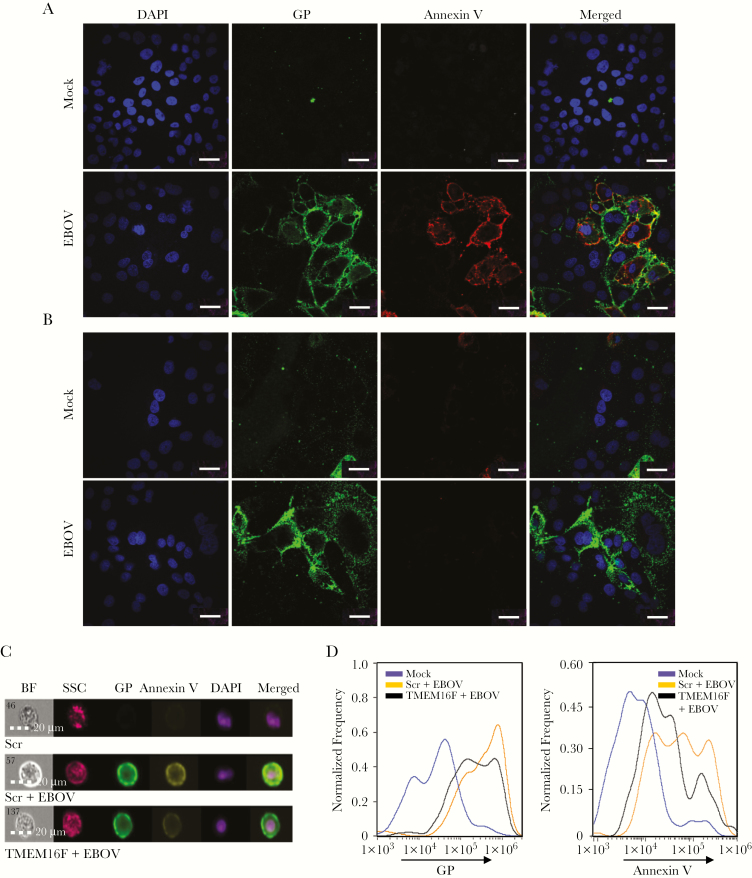Figure 1.
Ebola virus (EBOV)–induced extracellular expression of phosphatidylserine (PtdSer) is dependent on transmembrane protein 16F (TMEM16F) function. Huh7 cells were transduced with lentiviral vectors encoding scrambled short hairpin RNA (shRNA) (Scr) or shRNAs specific for TMEM16F and infected with EBOV at a multiplicity of infection of 1 plaque-forming unit/cell. A, B, Translocation of PtdSer to the outer leaflet of the plasma membrane in EBOV-infected Huh7/shScramble (A) or Huh7/shTMEM16F (B) cells. Targeted knockdown of TMEM16F results in decreased levels of plasma membrane-associated PtdSer (scale bar represents 30 μm). C–E, Imaging flow cytometry analysis of mock-infected and EBOV-infected shRNA cell lines. C, Representative images of mock-infected and EBOV-infected Huh7/shScramble and Huh7/shTMEM16F cell lines. The merged image is based on glycoprotein (GP), annexin V, and 4′,6-diamidino-2-phenylindole (DAPI). D, Relative levels of EBOV GP (left) and annexin V staining (right) of mock-infected and EBOV-infected Huh7/shScramble and Huh7/shTMEM16F cell lines. See Supplementary Figure 2B for gating strategy. Panels A and B are representative of 1 of 7 and panels C and D are representative of 1 of 3 independent experiments. Abbreviations: BF, bright field; SSC, side scatter.

